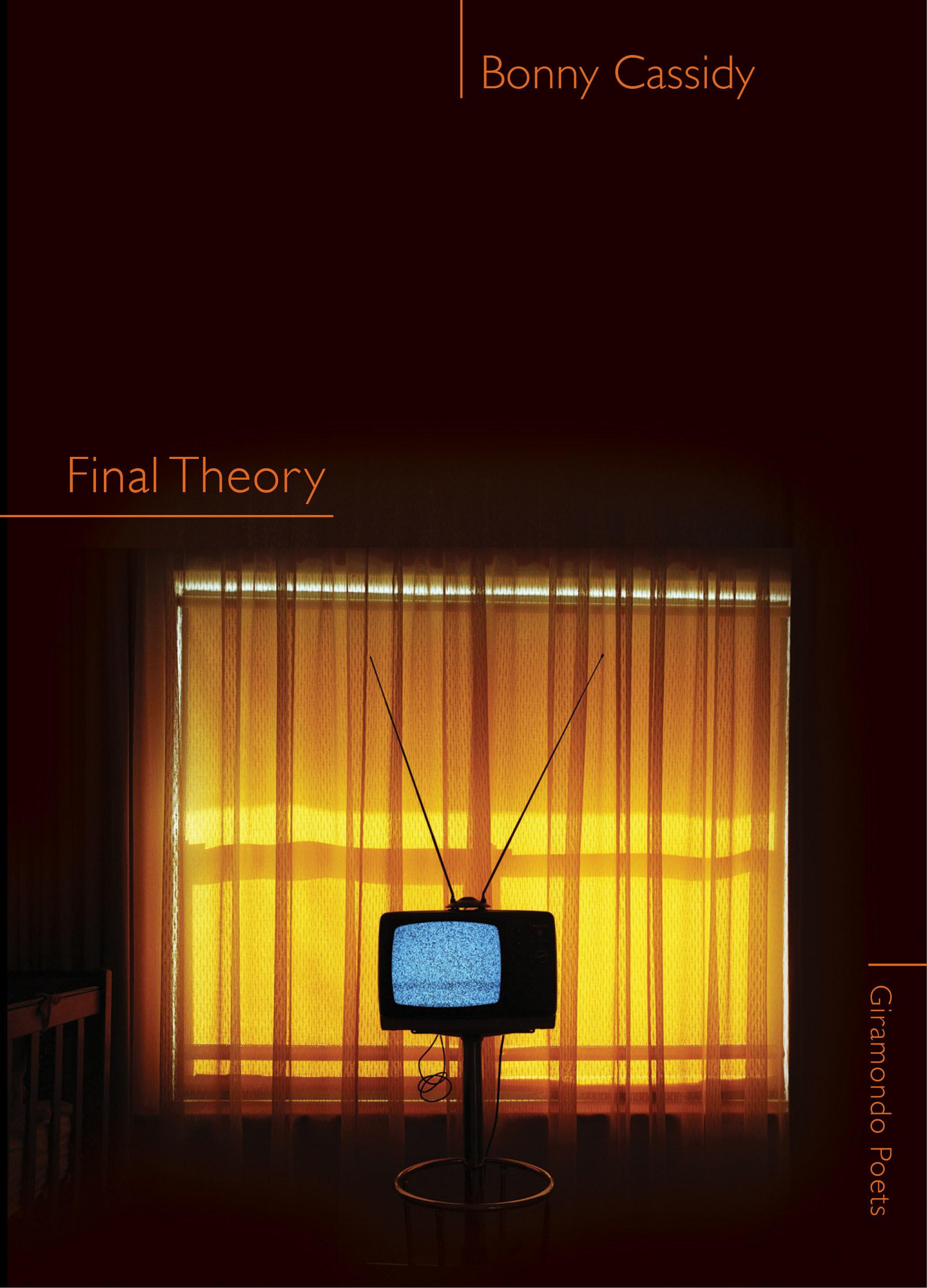 Your mission, should you choose to accept it, is to send a poet to New Zealand, Tasmania, South Australia, and Antarctica. Encourage her to write poems during her travels, and then publish them as a book. Well, guess what? Thanks to the Marten Bequest Travelling Scholarship for Poetry, the University of Western Sydney, and Giramondo Publishing, all you, dear reader, need do is settle back into your armchair with Final Theory and allow yourself to be transported into Bonny Cassidy’s unique poetic world. All the hard work had been done for you. Enjoy.
Your mission, should you choose to accept it, is to send a poet to New Zealand, Tasmania, South Australia, and Antarctica. Encourage her to write poems during her travels, and then publish them as a book. Well, guess what? Thanks to the Marten Bequest Travelling Scholarship for Poetry, the University of Western Sydney, and Giramondo Publishing, all you, dear reader, need do is settle back into your armchair with Final Theory and allow yourself to be transported into Bonny Cassidy’s unique poetic world. All the hard work had been done for you. Enjoy.
What did you say? It’s not that easy to enter poetic worlds? You’re right, on first reading, these poems feel frustratingly opaque and your head begins to spin. But then you notice that the book is divided into four chapters — let these serve as your compass. Each chapter is made up of several untitled poems, separated from each other by tiny asterisks — let these serve as your guiding constellations.
Chapter One introduces a stark New Zealand landscape, through which speaker and companion travel by car. Sombre references are made to extinction and global warming: ‘In a knot they well beneath the ozone tear’, but there is also a steady subtext here of the love felt by a travelling couple, ‘me in your apartment, shimmying/rocksteady’, and a sense that they are finding both direction and pleasure.
Chapter Two introduces a mysterious ‘she’, who is foetus, baby and girl. She skims, chews, floats, and drops through both natural and unnatural landscapes, ‘the sweep of wind and water…/face to face with a rubber alligator’. The movement here is reminiscent of the life within the uterus and birth canal, while it also hints at an Australian childhood spent along the shore of a vast, mysterious land.
Chapters Three and Four then expand on these two parallel narratives. In Chapter Three, the couple drive for higher ground through desolate landscapes and ghost-towns, a journey which feels like the growing love-relationship between two artists in a hostile, yet inspiring, environment, ‘hold my hand/we rush in’. Chapter Four expands on the adventures of the baby/girl of Chapter Two, building layer upon layer of new meaning. Here, plastic may refer to something easily moulded, and not necessarily the synthetic material polluting the land. The girl grows and begins to draw and discover language, beautiful even in the repeated scrawling of ‘TOYOTATOYOTATOYOTA’.
The two chapters describing ‘she’ are so fresh and powerful, that the other two chapters describing the travelling couple pale in comparison. I found myself wishing that Chapters Two and Four stood side-by-side, the better to capture the magical exploration of conception, birth and childhood. Cassidy chose to introduce her book with an exquisite stand-alone poem about this: ‘child [who] plunges headlong into that valley’ after being tracked by a camera — a moving evocation of the journey of a baby from ultrasound to birth, and of a poem from ‘ink without words’ into text. ‘One letter at a time. I write her out’.
These challenging free verse poems might turn some readers away with their opacity and somewhat repetitious descriptions of deserted landscapes. But the reader who perseveres with a second reading will be generously rewarded with the discovery of Cassidy’s exquisite hymn to birth.
Despite having a Bachelor of Arts in Literature, Eleanor Smagarinsky only discovered the joy in poetry after studying under Professor Al Filreis in his MOOC called ModPo (UPenn). In the words of Gertrude Stein, ‘The difference is spreading’.
